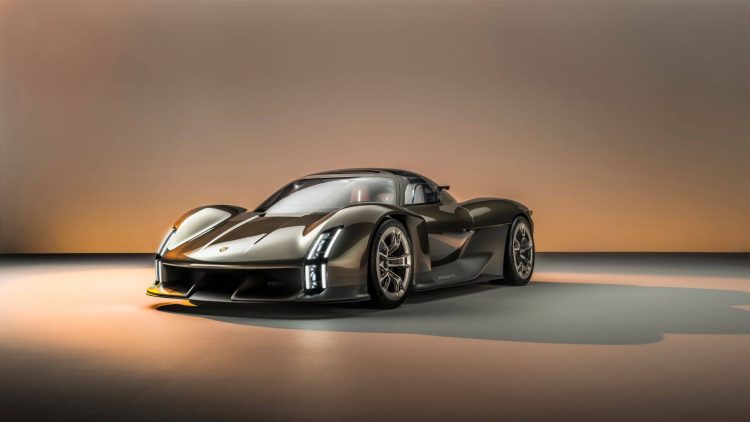In honor of its 75th anniversary, legendary sports car maker Porsche has unveiled a brand-new vision of its future. The Mission X is an intriguing concept of what the sports vehicle of the future might look like, but it is not for sale. The Mission X is the peak of luxury and innovation in automobiles due to its small size, state-of-the-art design, and outstanding performance.
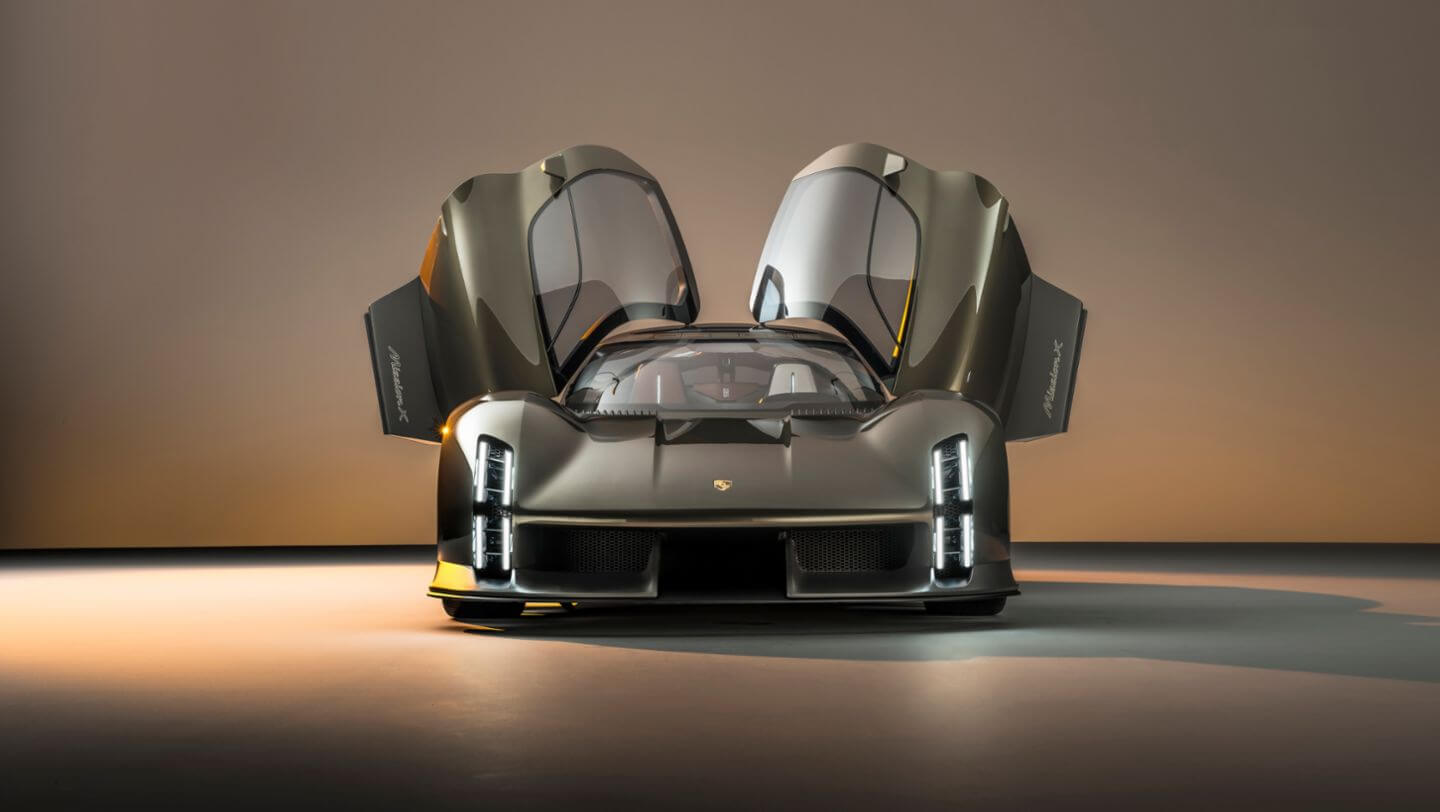
The Mission X concept study is a hypercar that is not too large, at about 177 inches in length and 78.7 inches in width. It has a 107.4-inch wheelbase, which is comparable to that of the Carrera GT and 918 Spyder. Staggered tires, with smaller front wheels (20 inches) and larger rear wheels (21 inches), add to the vehicle’s aerodynamic shape and boost its performance.
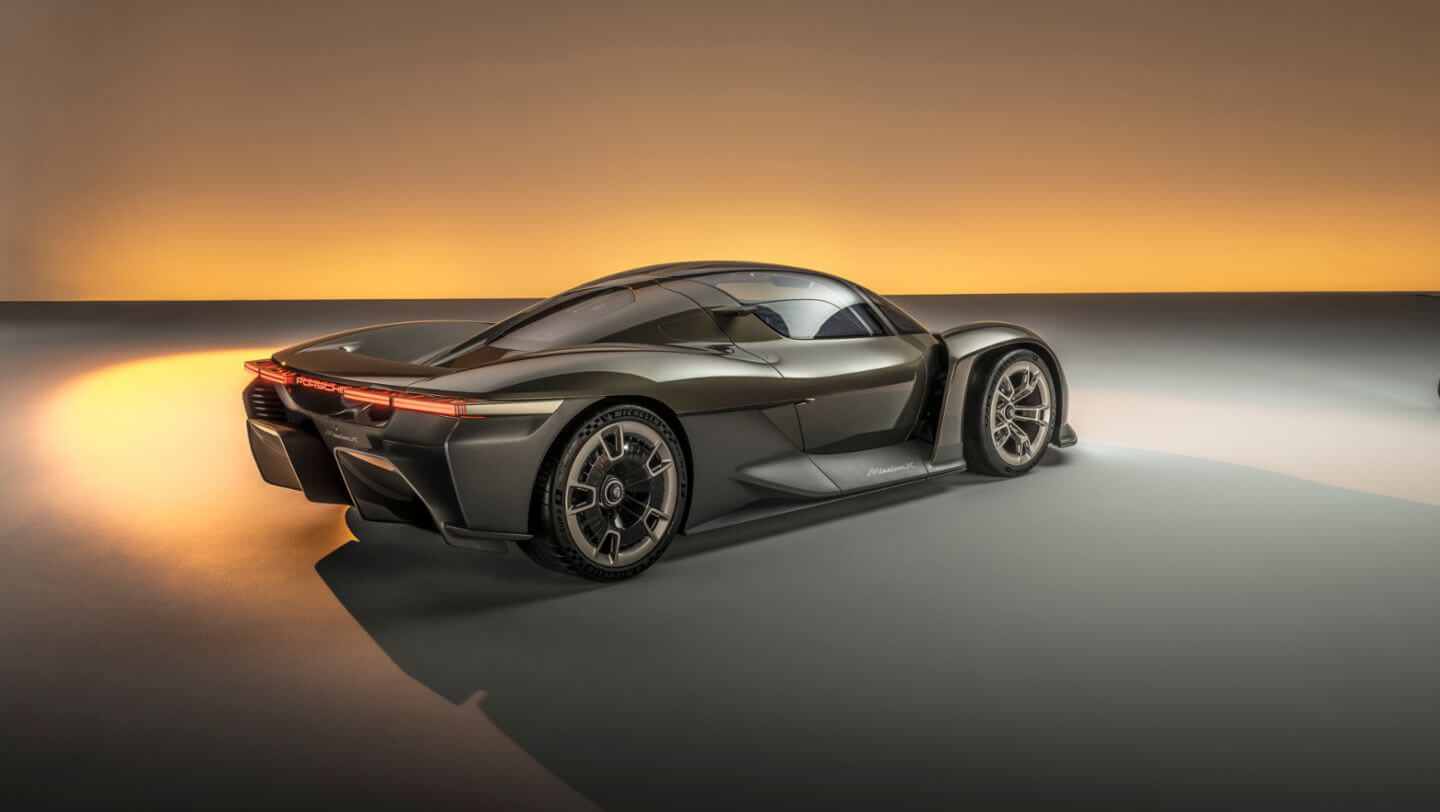
The Mission X disputes the common belief that hypercars have to look intimidating. It has a striking Rocket Metallic finish made just for this concept research, and its low-slung body measures less than 47.2 inches in height. Subtle design elements made of carbon fiber with a satin finish highlight the material’s distinctive structure and offer a level of refinement to the area below the waistline. The brakes on the Mission X’s rear wheels are cooled by transparent aero blades that resemble turbines.
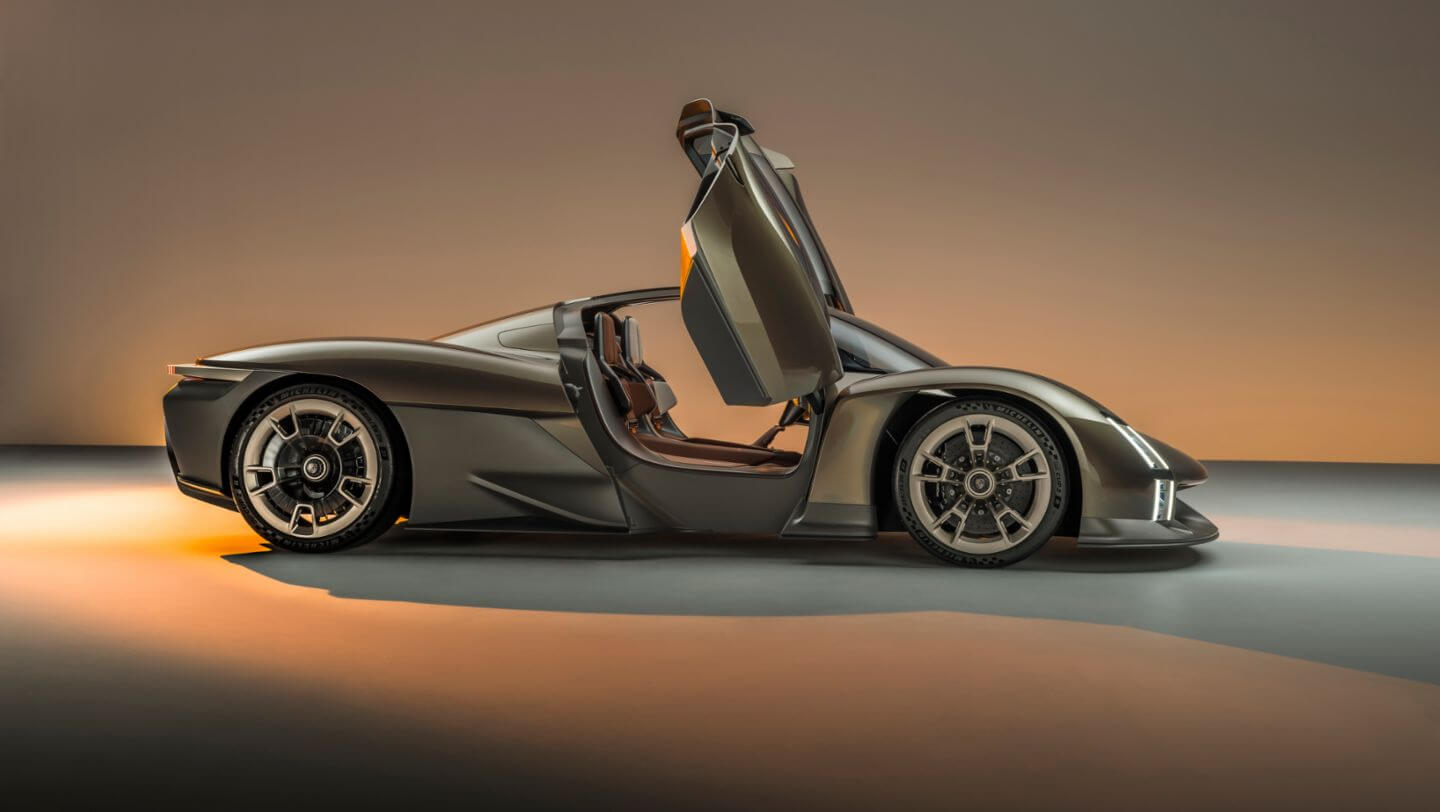
The concept study’s novel look is largely due to its lightweight glass dome, which rests atop a carbon fiber reinforced plastic (CFRP) exoskeleton. In homage to the renowned Porsche 917 racing vehicle, the doors open forward and upward in the classic Le Mans way. The Mission X’s vertical base shape and high-tech support structure framing the LED light modules are reminiscent of the headlights of classic racing cars like the Porsche 906. With illuminated Porsche lettering and an eye-catching rear light design, the vehicle’s taillights appear to float above the ground.
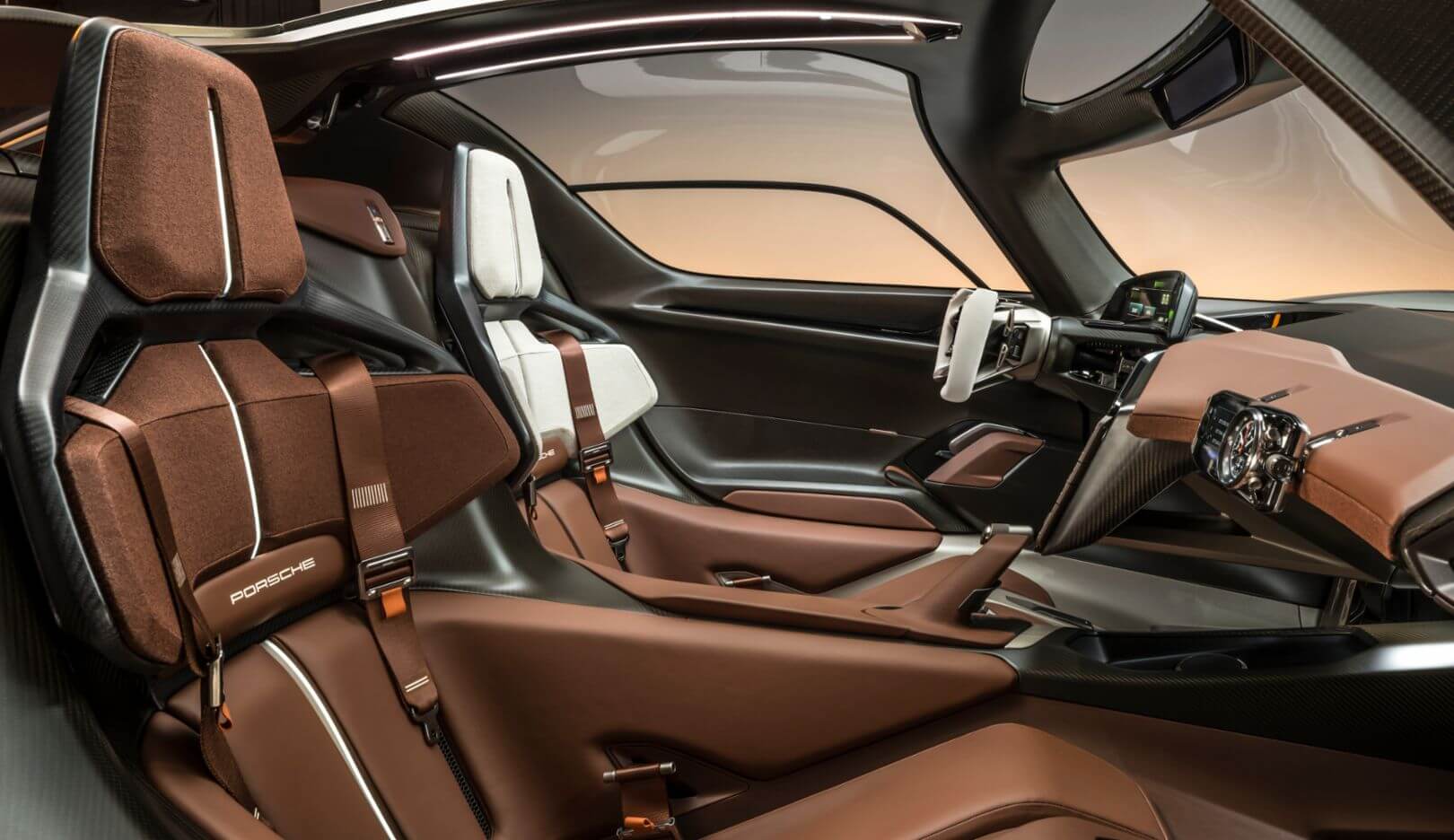
With its brushed precious metal surface, three-dimensional honeycomb structure, and delicate gold accents, the Mission X introduces a refreshed Porsche crest. The driver-centric interior is reflected in the asymmetry between the driver’s Kalahari Grey seat and center console and the passenger’s Andalusia Brown seat. Inside, there are seat shells made of carbon fiber reinforced plastic (CFRP), six-point seatbelts built into the monocoque, and a top-mounted steering wheel with controls for the various driving modes. The car is equipped with a number of cameras so that the driver can record their travels.
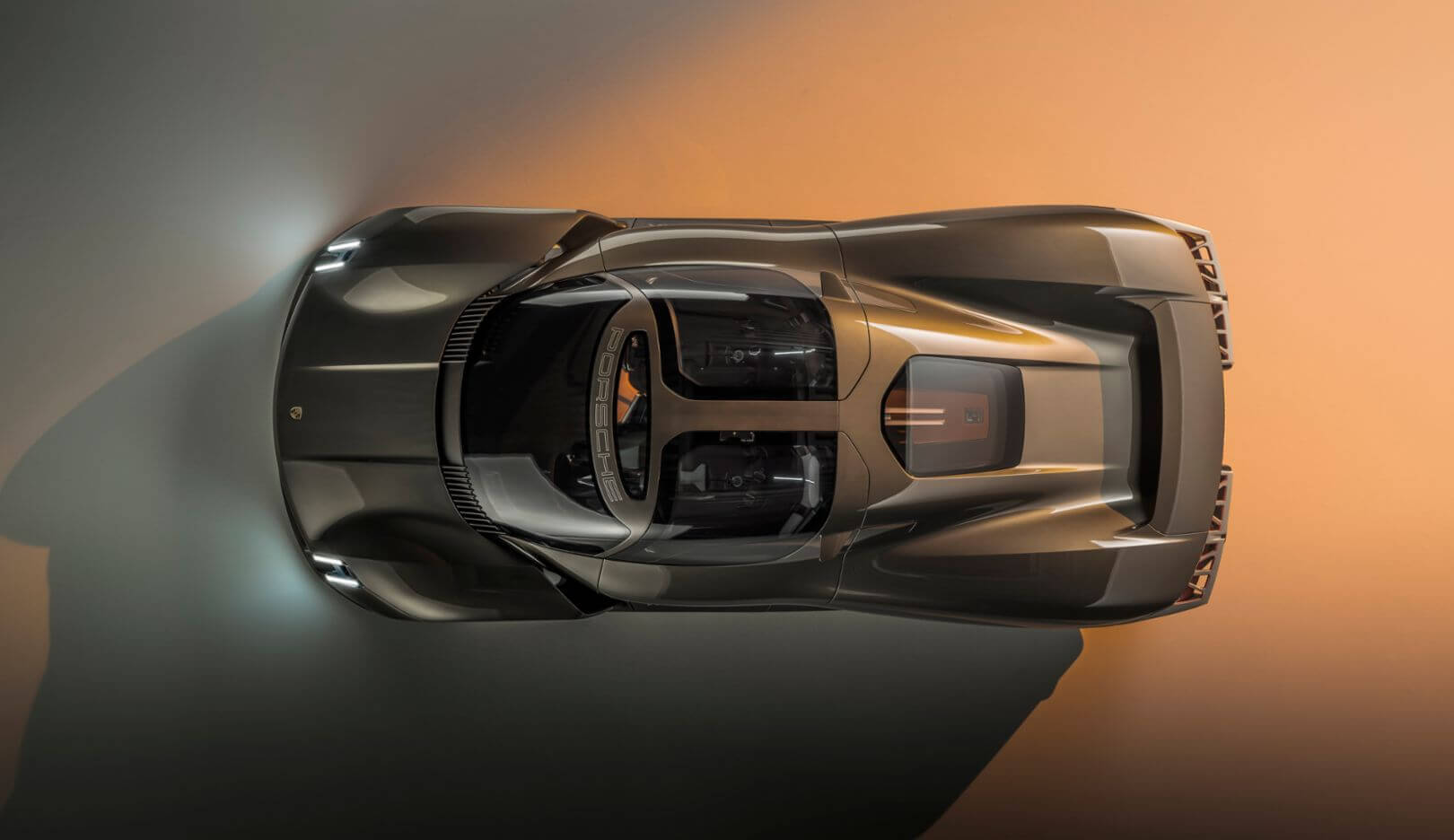
Porsche’s dedication to e-performance and environmentally responsible mobility is on full display in the Mission X research. With a power-to-weight ratio of almost one horsepower every 2.2 pounds, the Mission X hopes to become the quickest road-legal car on the Nürburgring Nordschleife track if it goes into series production. It is anticipated that it will create downforce values superior than those of the existing 911 GT3 RS.
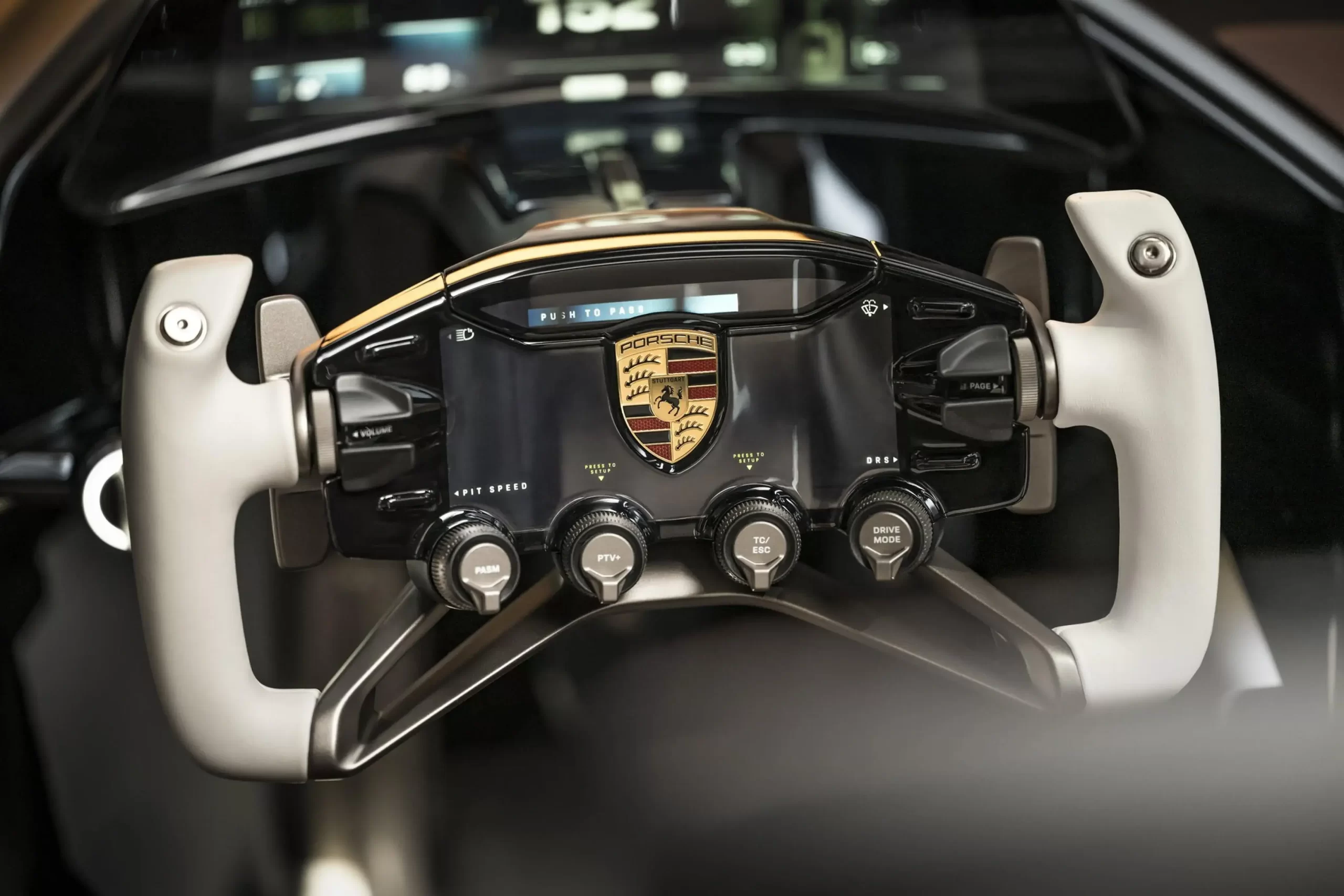
With its 900-volt system architecture, the Mission X provides superior charging performance compared to Porsche’s current flagship electric vehicle, the Taycan Turbo S. By placing the battery in the middle of the vehicle, in a ‘e-core arrangement,’ the vehicle’s center of gravity is lowered and its maneuverability is increased.


